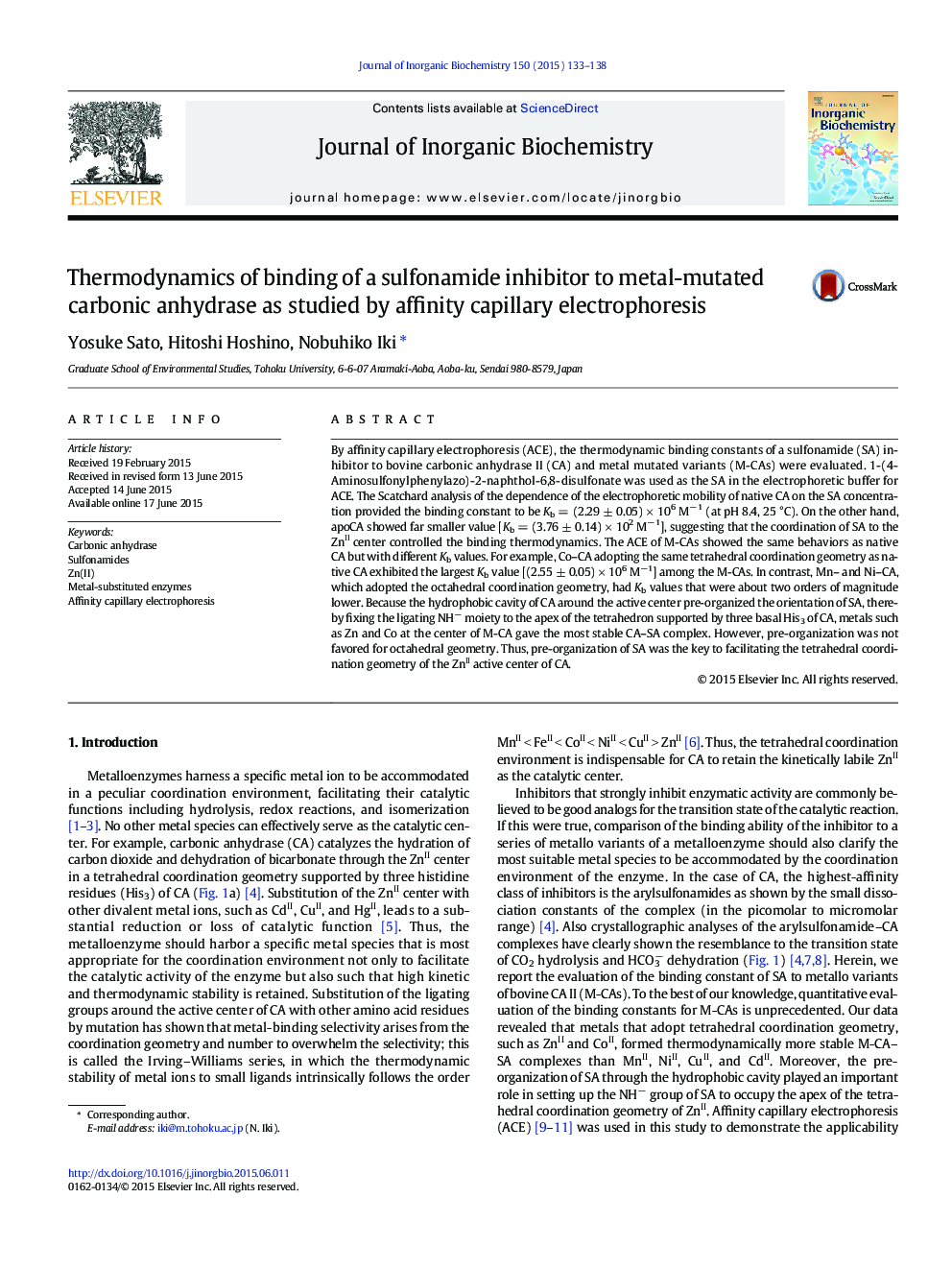| کد مقاله | کد نشریه | سال انتشار | مقاله انگلیسی | نسخه تمام متن |
|---|---|---|---|---|
| 1315862 | 1499437 | 2015 | 6 صفحه PDF | دانلود رایگان |
• Binding constants (Kb) of sulfonamide to carbonic anhydrase (CA) were estimated.
• Kb of metal variants (M-CAs) depended on the coordination geometry.
• Co– and Zn–CAs with tetrahedral geometries at the center had the largest Kb.
• Mn– and Ni–CAs with octahedral geometries had lower Kb.
• Pre-organization of sulfonamide by the CA cavity determines the Kb of M-CA.
By affinity capillary electrophoresis (ACE), the thermodynamic binding constants of a sulfonamide (SA) inhibitor to bovine carbonic anhydrase II (CA) and metal mutated variants (M-CAs) were evaluated. 1-(4-Aminosulfonylphenylazo)-2-naphthol-6,8-disulfonate was used as the SA in the electrophoretic buffer for ACE. The Scatchard analysis of the dependence of the electrophoretic mobility of native CA on the SA concentration provided the binding constant to be Kb = (2.29 ± 0.05) × 106 M− 1 (at pH 8.4, 25 °C). On the other hand, apoCA showed far smaller value [Kb = (3.76 ± 0.14) × 102 M−1], suggesting that the coordination of SA to the ZnII center controlled the binding thermodynamics. The ACE of M-CAs showed the same behaviors as native CA but with different Kb values. For example, Co–CA adopting the same tetrahedral coordination geometry as native CA exhibited the largest Kb value [(2.55 ± 0.05) × 106 M−1] among the M-CAs. In contrast, Mn– and Ni–CA, which adopted the octahedral coordination geometry, had Kb values that were about two orders of magnitude lower. Because the hydrophobic cavity of CA around the active center pre-organized the orientation of SA, thereby fixing the ligating NH− moiety to the apex of the tetrahedron supported by three basal His3 of CA, metals such as Zn and Co at the center of M-CA gave the most stable CA–SA complex. However, pre-organization was not favored for octahedral geometry. Thus, pre-organization of SA was the key to facilitating the tetrahedral coordination geometry of the ZnII active center of CA.
Binding constants (Kb) of an arylsulfonamide (SA) to metal variants of bovine carbonic anhydrase II (CA) were determined. Active centers adopting tetrahedral geometry exhibited the largest Kb values, while those with octahedral geometry exhibited values that were much lower, suggesting that the CA cavity pre-organizes SA to achieve tetrahedral geometry.Figure optionsDownload as PowerPoint slide
Journal: Journal of Inorganic Biochemistry - Volume 150, September 2015, Pages 133–138
